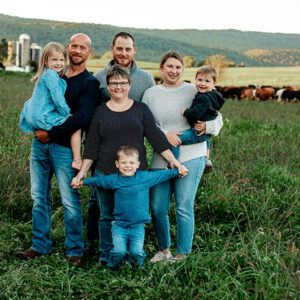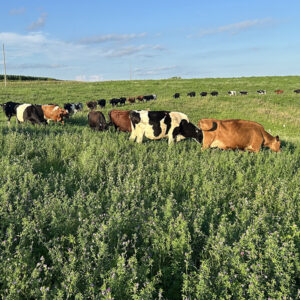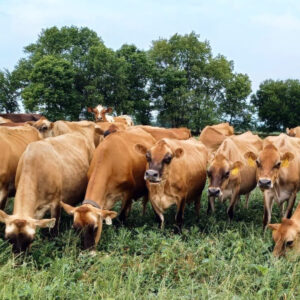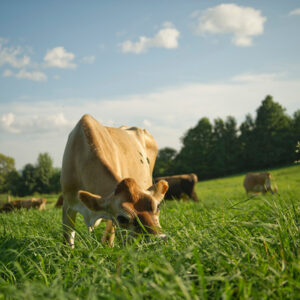Low-input dairy graziers make shifts for long-term sustainability and efficiency
By Martha Hoffman Kerestes
Belleville, Pennsylvania — After 30 years shipping conventional milk on a spring-seasonal schedule, the Bylers switched to the Organic Valley truck and moved to bi-seasonal calving.
But that’s just one of many adjustments they’ve made over time to set the farm up for short- and long-term success.
Low-input management is the cornerstone, and that means outwintered herds, nurse cows, natural service, limited machinery, and more. Matt Byler, 53, and his son Garrett, 31, run the 250-cow dairy with a full-time DGA apprentice and a part-time employee.
Cows doing the work
The Bylers manage around 750 rented and owned acres, although some are still in the process of organic transition. Their central Pennsylvania ground is relatively flat. The milking herd has access to the 320-acre home farm for year-round grazing, and there is off-farm acreage for young stock and dry cows.
All grain is purchased — the herd gets 10 lbs./head/day in the parlor. The pelleted mix is primarily ground corn and provides 20-25% of cows’ dry matter needs for the day. At times the herd gets some purchased corn silage too.
Continue reading “From seasonal conventional to organic”





